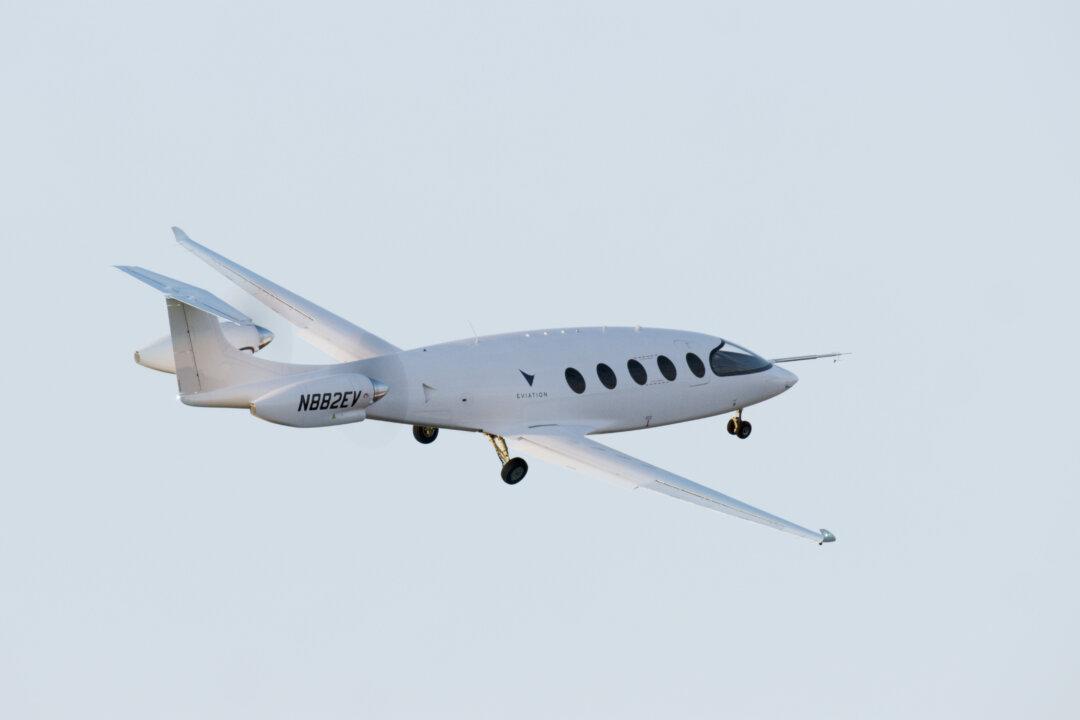An all-electric airplane developed by Eviation Aircraft achieved a major milestone in electric aviation as it flew for 8 minutes at an altitude of 3,500 feet, the company announced.
The flight took off on Tuesday at 7:10 a.m. from the Grant County International Airport in Washington. The zero-emission aircraft, named Alice, cuts down on noise significantly and is only a fraction of the cost to operate per flight hour compared to high-end turboprop planes or light jets, the company claimed in a Sept. 27 press release (pdf).





